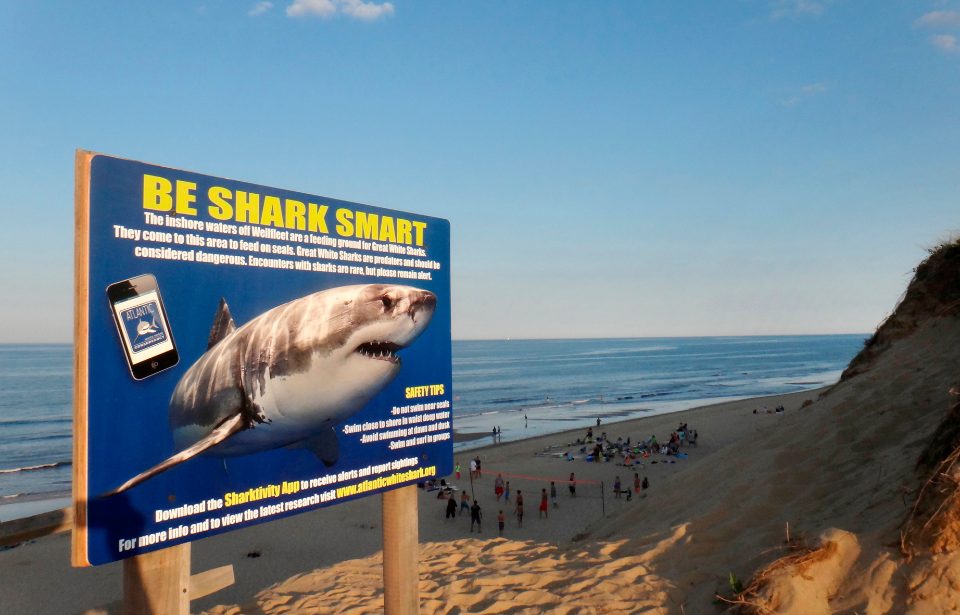Over a century ago, between the 1st and 12th of July, 1916, the residents along the coast of New Jersey in the USA were at the mercy of a rogue shark that injured one person and killed four.
Sharks were not seen as the man-killers they are today
One important point to note is that in 1916, nobody considered sharks a serious threat to humans in the temperate waters of the northeastern United States. Scientists were convinced that no shark would attack without provocation.
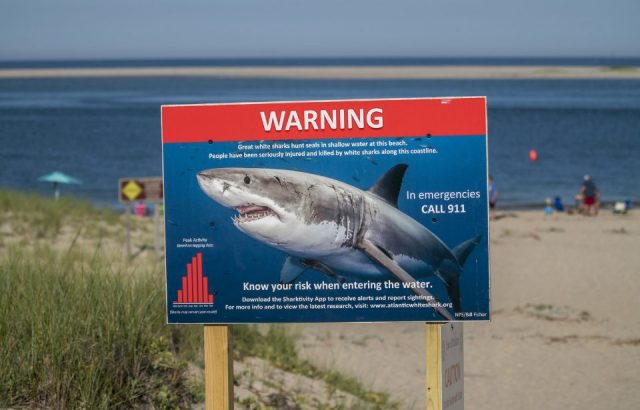
Lending weight to this theory was an experiment by Hermann Oelrichs, banker and adventurer. In 1891, Oelrichs advertised a $500 reward in the New York Sun for anyone who could prove they had been attacked by a shark around Cape Hatteras. No one claimed the reward. Oelrichs also jumped into the water near a shark on two separate occasions, coming away unharmed and proving his point.
Scientists and ichthyologists even doubted whether a shark’s jaws were powerful enough to sever a human leg or crunch through human bones. But events in New Jersey were about to prove otherwise.
The first victim
The borough of Beach Haven is an idyllic spot on Long Beach Island in New Jersey. In the heatwave of summer 1916, and with a polio epidemic plaguing the USA, many people decided that a beach trip was exactly what they needed. That was certainly at the forefront of 28-year-old Charles Epting Vansant of Philadelphia when he went with his family to stay at the Engleside Hotel.
On July 1, he decided to have a quick pre-dinner swim. He was playing in the water with a Chesapeake Bay Retriever he’d befriended, so when he started screaming, some thought he was shouting to the dog — but a shark had his legs.
Lifeguard Alexander Ott and bystander Sheridan Taylor rescued him with the shark refusing to let go until its belly scraped the sandy shore. Vansant’s left thigh had been stripped of flesh, and he bled to death on the manager’s desk of the Engleside Hotel.
Warnings ignored
Shark attacks were pretty much unheard of at the time. It was still 58 years before Peter Benchley’s book Jaws would be published, and almost 30 years before the USS Indianapolis sank and sharks reduced the number of survivors from 900 men to only 317 in the space of a few days.
In 1916, nobody viewed sharks as seriously dangerous to humans. In fact, the State Fish Commissioner of Pennsylvania suggested that the shark had, in fact, been after the dog. In the Philadelphia Public Ledger, he is quoted as saying: “I hardly believe that Vansant was bitten by a man-eater. Vansant was in the surf playing with a dog and it may be that a small shark had drifted in at high water, and was marooned by the tide. Being unable to move quickly and without food, he had come in to bite the dog and snapped at the man in passing.”
There were very few changes made to the beaches, but a steel net was put across the sea in Beach Haven to protect bathers.
The second attack
On Thursday, July 6, a second attack occurred at Spring Lake, 45 miles (72 km) north of the first incident. Charles Bruder, 27, was not a tourist but a bellboy captain at the Essex and Sussex Hotel. He regularly went for a lunchtime swim. When he was only 130 yards (120 meters) from the shore, he was bitten in the abdomen and legs.
Two lifeguards reached him in a lifeboat, but he bled to death on his way to the shore. All the flesh and bone below his knees was missing. His injuries were so shocking that, when he was taken ashore, some women fainted.
A terrifying and sensational story
While the first attack had been glossed over, this second attack made the front page of major American newspapers.
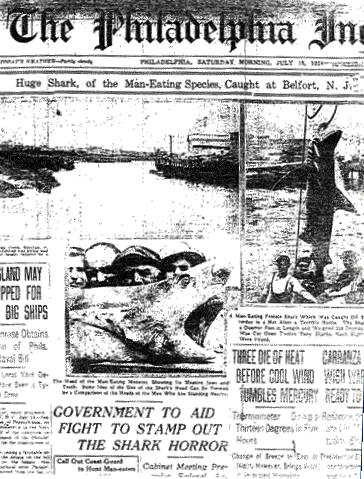
By now, shark sightings along the coast had increased, and armed motorboats patrolled parts of the ocean. Tourists became nervous about visiting the beaches, and it was estimated that New Jersey businesses lost around $250,000 (equivalent to almost $6 million in 2020).
However, the scientists continued to say there was little to worry about. At a press conference at the American Museum of Natural History on July 8, three scientists reassured the public that a third attack would be highly unlikely.
Three in one day
The next attack took place further north still at Matawan Creek, which was almost a mile inland and certainly no beach resort. The waters have been described as “brackish and muddy.”
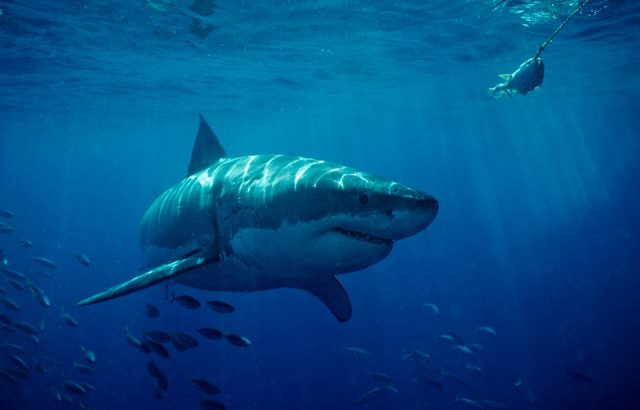
On July 12, Matawan resident and sea captain Thomas Cottrell spotted the shark making its way up the river, but no one believed him when he tried to raise the alarm.
At 2 p.m., some boys were swimming in Matawan Creek. What they thought was a log or beaten board turned out to be a shark. Lester Stilwell, 11, was pulled under by it. His friends called for help and locals came running. Some took to the water in a rowboat to see if they could find Stilwell. Not many believed the boys about a shark, and they assumed that Stilwell (who had epilepsy) had simply had a seizure.
Spotting the boy’s body, local tailor Watson Stanley Fisher, 24, dived into the water. As he was retrieving Stilwell’s body, the shark bit his right leg. He let go of Stilwell’s body and was dragged to shore, but he died on the way to the hospital. Stilwell’s body was eventually recovered two days later.
The fifth and final victim was the only one to survive. Joseph Dunn, 14, was attacked 30 minutes later and half a mile away from the attacks on Stilwell and Fisher. The shark bit his left leg but miraculously missed severing an artery. His brother and a friend rescued him after a tug of war with the shark. He was in hospital until September 15, but he was still lucky enough to walk away from the attack.
The hunter is hunted
This third incident prompted locals to take drastic action. The mayor of Matawan ordered that posters offering $100 (equivalent to $2,300 in 2020) for the shark’s death be printed. Other Matawan residents tried a combination of nets and dynamite to catch the shark. The efforts along the East Coast to catch this man-eater have been described as “the largest scale animal hunt in history.”
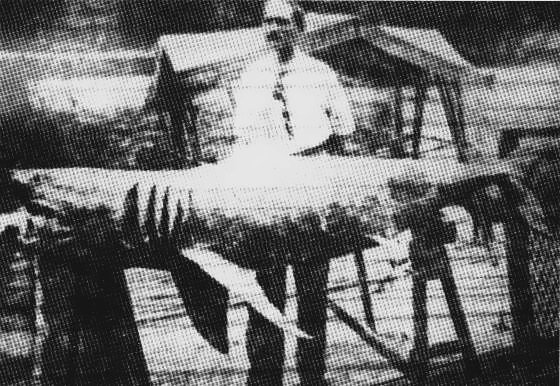
Several sharks were caught in the wake of the attacks, but it is assumed that the killer shark was finally caught by Michael Schleisser. He had cast a dragnet in Raritan Bay, a few miles from Matawan Creek, and he found tangled in it a shark measuring 7.5 feet (2.3 meters) and weighing 325 pounds (147 kg). The shark almost sank the boat before Schleisser managed to kill it by repeatedly hitting it with a broken oar.
Upon returning to shore, the shark was identified as a young great white shark, and inside it was found “suspicious fleshy material and bones” that were identified as being human.
Schleisser had the shark mounted, and it was displayed in the window of a Manhattan shop before it was lost. All that remains is a photograph of Schleisser with the shark from the Bronx Home News.
Were the attacks actually carried out by an irate sea turtle?
In 2002, the National Geographic Society stated that some scientists now think that the 1916 attacks might have been carried out by a bull shark, not a great white. Even though the shark attacks stopped after Schleisser’s kill, some say that the evidence really points to a bull shark because they have been frequently observed swimming from the ocean into freshwater streams and rivers.
However, a documentary for the Smithsonian Channel noted that the Matawan Creek attacks took place during a full moon, which would have doubled the water salinity, added weight to the idea it had been a great white all along.
A slightly more outlandish theory that was put forward by an anonymous letter to The New York Times suggested that German U-boats might be directly responsible for the sharks: “These sharks may have devoured human bodies in the waters of the German war zone and followed liners to this coast… expecting the usual toll of drowning men, women and children… This would account for their boldness and their craving for human flesh.”
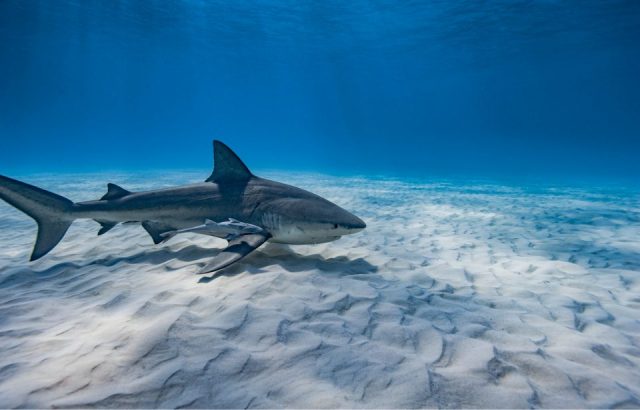
Perhaps the most bizarre alternative theory was that the attack was carried out by sea turtles. This had been theorized by some at the beginning and was most succinctly argued by Barret P. Smith in another letter to The New York Times: “Scientists have spent much time at sea and along the shore, and have several times seen turtles large enough to inflict such wounds. These creatures are of a vicious disposition, and when annoyed are extremely dangerous to approach, and it is a common theory that Bruder may have disturbed on while it was asleep on or close to the surface.”
From timid to terrifying
The July 1916 attacks forced scientists and ichthyologists to revise their opinions of sharks. Hugh McCormick Smith, the editor for the National Geographic Society, published an article in July 1916 stating that while some shark species were as “harmless as doves,” others were “the incarnation of ferocity.”
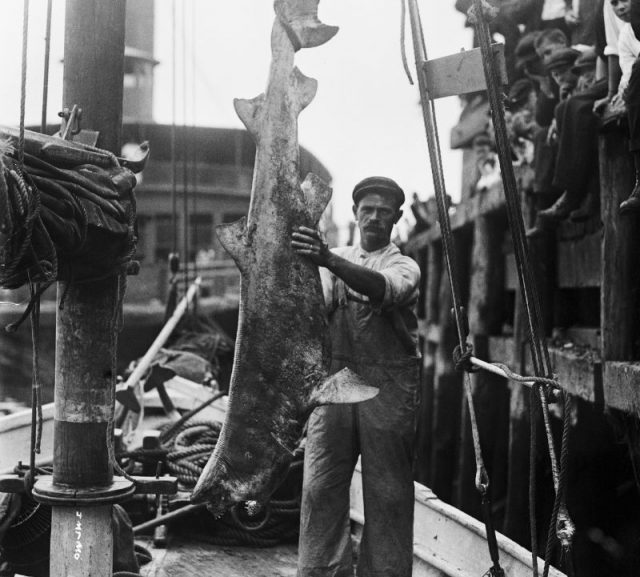
Speaking to the Smithsonian Magazine, George Burgess (curator of the International Shark Attack File at the Florida Museum of Natural History) stated how money had been provided for research into tuna, cod, and salmon because those species make money. But sharks were “something we really didn’t want to have around. Those darn things are eating the good fish! As a result, research on sharks lagged far behind that of other fishes all the way until the 1990s.”
A scene straight out of Jaws
For a long time, many believed that Peter Benchley based his book on this real event, but a recent correction from the New York Times made it clear that the 1916 attacks did not serve as inspiration for his novel. However, the parallels that can be drawn between reality and fiction are striking.
In the movie, Chief Brody (Roy Schneider) and Hooper (Richard Dreyfuss) urge the mayor to close the beaches, but he refuses because of what it would do to the tourism industry. The ensuing shark hunt. The scene where Brody’s son, Michael, is swimming with his friends in a small estuary that is considered safe only for the shark to show up. All these elements could have been taken directly from the events in 1916.
More from us: 12 People Who Made Really Embarrassing Predictions About Technology
Whether or not the attacks directly influenced Benchley, the Jersey Shore incident has still inspired its own television programs and films. It has been featured in documentaries for the History Channel and National Geographic Channel, as well as being made into a TV movie called 12 Days of Terror (2004).
Today, there are two memorials to the victims of this terrible summer in the town of Matawan.
